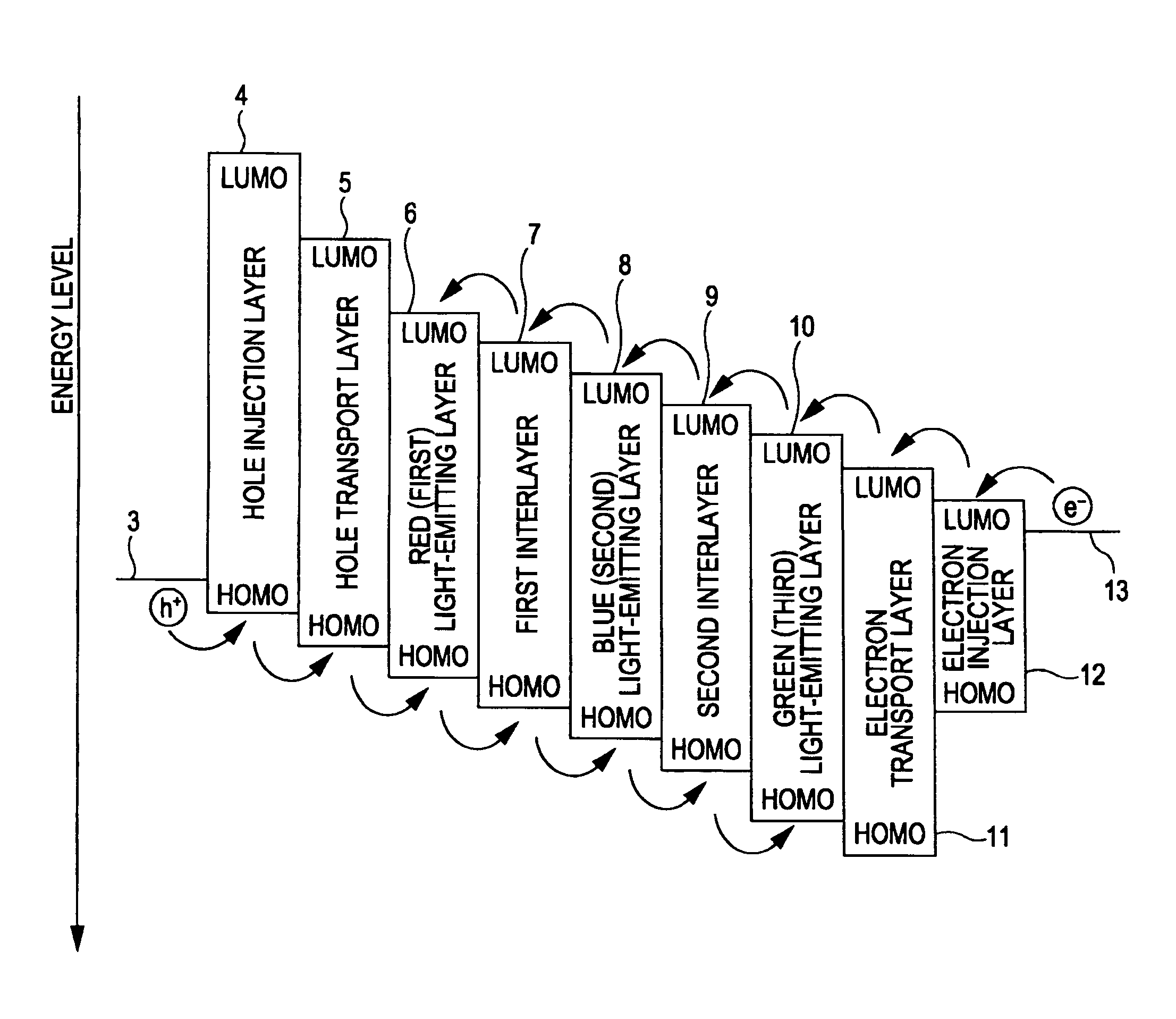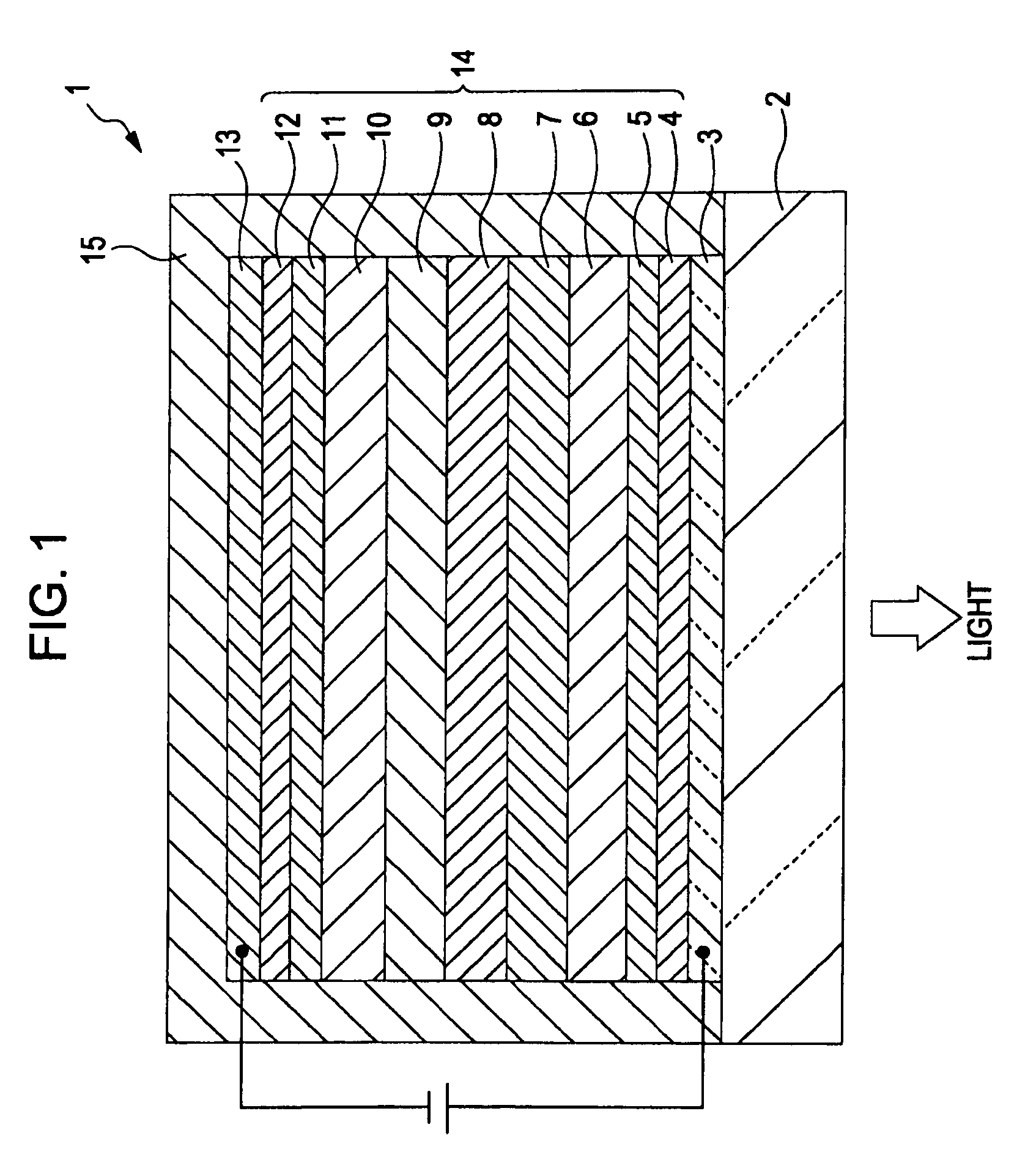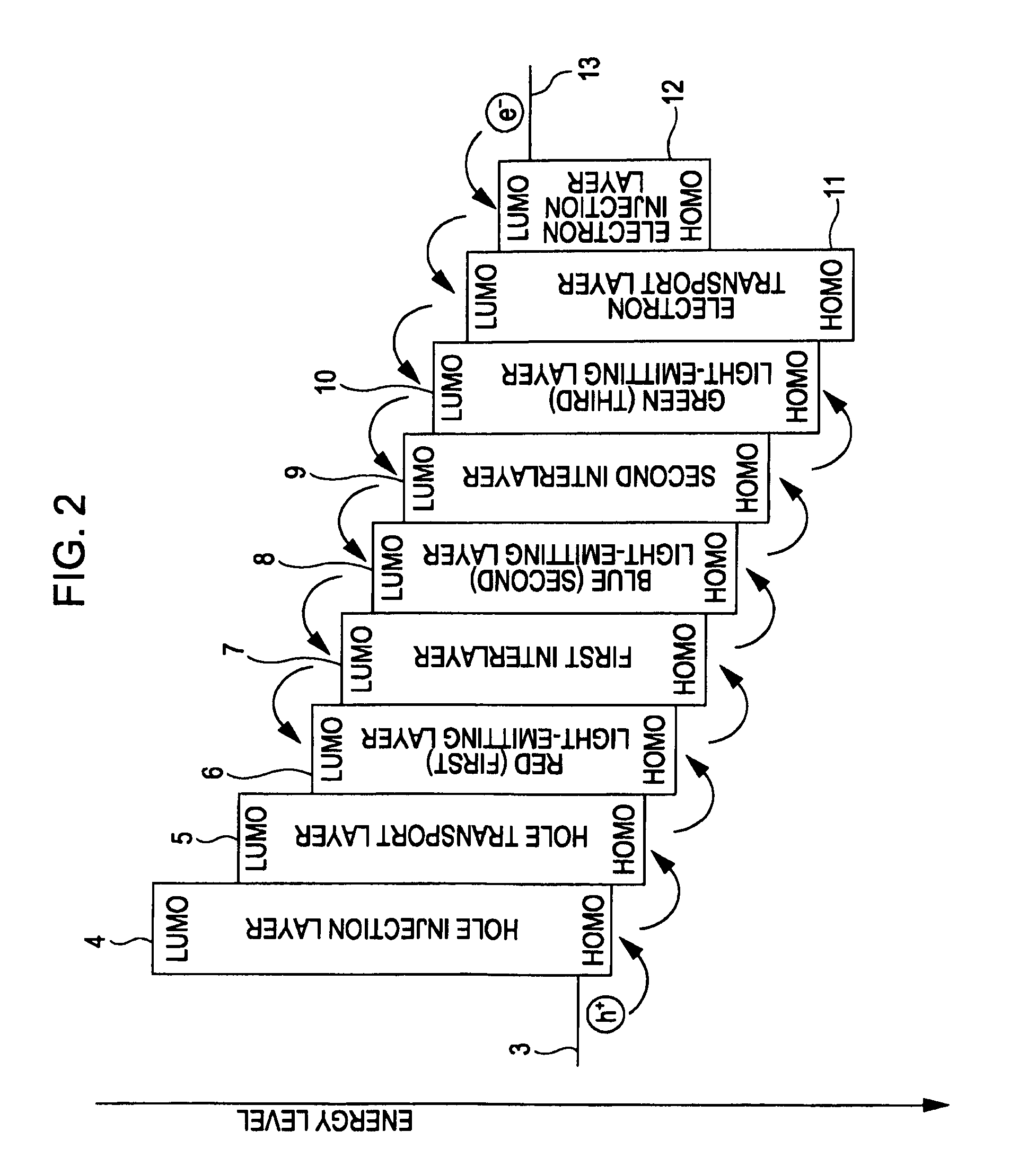Light-emitting element, display device, and electronic apparatus
a technology of light-emitting elements and electronic devices, which is applied in the direction of identification means, instruments, discharge tubes, etc., can solve the problems of low durability of light-emitting elements, and achieve the effects of good balance, excellent reliability, and reduced driving voltage of light-emitting elements
- Summary
- Abstract
- Description
- Claims
- Application Information
AI Technical Summary
Benefits of technology
Problems solved by technology
Method used
Image
Examples
first embodiment
[0038]FIG. 1 is a schematic longitudinal cross-sectional view of a light-emitting element according to a first embodiment of the invention. FIG. 2 is a drawing illustrating the energy level of each of layers of the light-emitting element shown in FIG. 1. Note that, for the convenience of a description below, the upper side in FIG. 1 is defined as “top”, and the lower side in FIG. 1 is defined as “bottom”.
[0039]A light-emitting element (electroluminescence element) 1 shown in FIG. 1 emits red (R) light, green (G) light, and blue (B) light, thereby emitting white light. The light-emitting element 1 includes an anode 3, a hole injection layer 4, a hole transport layer 5, a red-light-emitting layer (first light-emitting layer) 6, a first interlayer 7, a blue-light-emitting layer (second light-emitting layer) 8, a second interlayer 9, a green-light-emitting layer (third light-emitting layer) 10, an electron transport layer 11, an electron injection layer 12, and a cathode 13, which are l...
second embodiment
[0133]FIG. 3 is a schematic longitudinal cross-sectional view of a light-emitting element according to a second embodiment of the invention. FIG. 4 is a drawing illustrating the energy level of each of layers of the light-emitting element shown in FIG. 3. Note that, for the convenience of a description below, the upper side in FIG. 3 is defined as “top”, and the lower side in FIG. 3 is defined as “bottom”. A light-emitting element 1A of this embodiment is the same as the above-described light-emitting element 1 of the first embodiment except that the order of lamination of light-emitting layers is different, and each of a first interlayer and a second interlayer has a two-layer structure including a first layer and a second layer.
[0134]In the light-emitting element 1A of this embodiment, as shown in FIG. 3, a laminate 14A is interposed between an anode 3 and a cathode 13. In the laminate 14A, from the anode 3 side to the cathode 13 side, a hole injection layer 4, a hole transport la...
example 1
[0183](1) First, a transparent glass substrate having an average thickness of 0.5 mm was prepared. Next, an ITO electrode (anode) having an average thickness of 100 nm was formed on the substrate by sputtering. The substrate is then immersed in ethanol to perform ultrasonic cleaning. Subsequently, an oxygen plasma treatment was performed.
[0184](2) Next, CuPc was deposited by vacuum evaporation on the ITO electrode to form a hole injection layer having an average thickness of 20 nm.
[0185](3) Next, the above-mentioned amine hole transport material (α-NPD) represented by Chemical Formula 1 was deposited on the hole injection layer by vacuum evaporation to form a hole transport layer having an average thickness of 40 nm.
[0186](4) Next, a material of a green-light-emitting layer was deposited on the hole transport layer by vacuum evaporation to form the green-light-emitting layer (first light-emitting layer) having an average thickness of 10 nm. Regarding the material of the green-light-...
PUM
 Login to View More
Login to View More Abstract
Description
Claims
Application Information
 Login to View More
Login to View More - R&D
- Intellectual Property
- Life Sciences
- Materials
- Tech Scout
- Unparalleled Data Quality
- Higher Quality Content
- 60% Fewer Hallucinations
Browse by: Latest US Patents, China's latest patents, Technical Efficacy Thesaurus, Application Domain, Technology Topic, Popular Technical Reports.
© 2025 PatSnap. All rights reserved.Legal|Privacy policy|Modern Slavery Act Transparency Statement|Sitemap|About US| Contact US: help@patsnap.com



